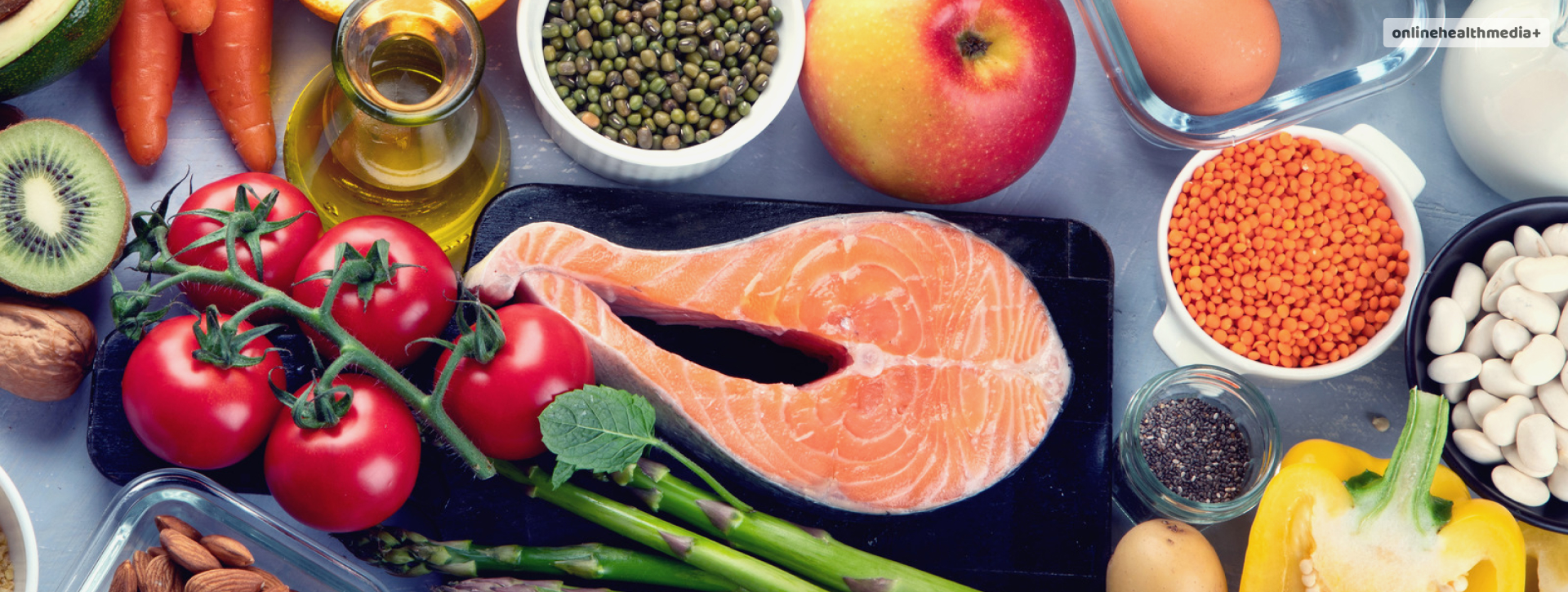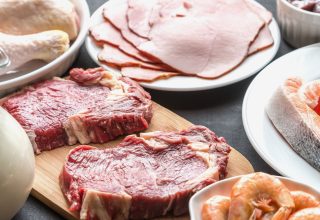Pescatarian Diet: When Seafood And Vegetables Go Hand In Hand
A pescatarian diet is a dietary pattern that combines elements of both vegetarianism and seafood consumption. People who follow this diet, known as pescatarians, primarily abstain from consuming meat and poultry but include fish and other seafood in their diet.
To know more about this vegetable and seafood-based diet, read this post till the end. Here, you will learn what foods are included in this diet and what are their benefits.
Contents
What Is A Pescatarian Diet? How Does It Work?
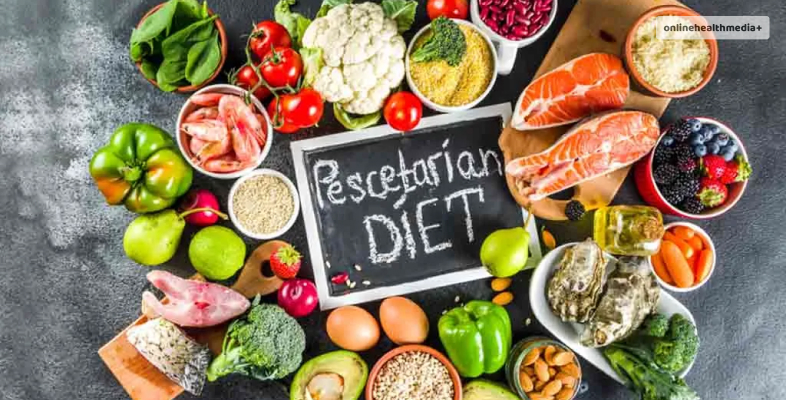
The pescatarian diet is a flexible and balanced dietary pattern that combines elements of vegetarianism with the inclusion of seafood. It works by excluding red meat and poultry while emphasizing plant-based foods and seafood as primary sources of nutrition.
Here’s a detailed explanation of how the pescatarian diet works:
1. No Red Meat And Poultry
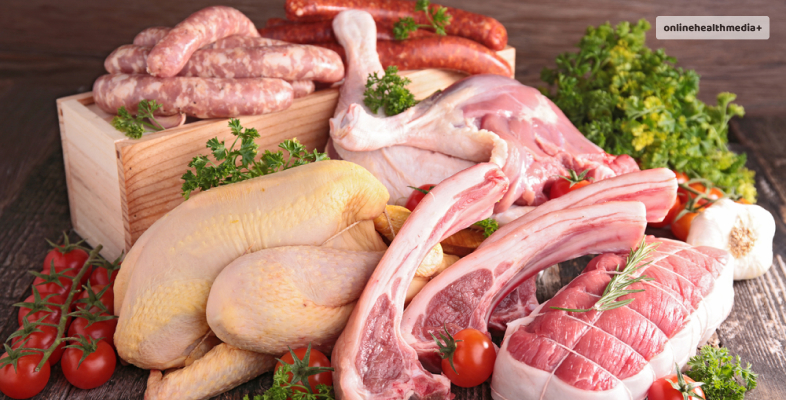
The pescatarian diet does not include red meat (e.g., beef, pork, lamb) or poultry (e.g., chicken, turkey). These animal meats are excluded from the diet, making this the opposite of the cyclical ketogenic diet and the Dukan diet.
2. Lots Of Seafood
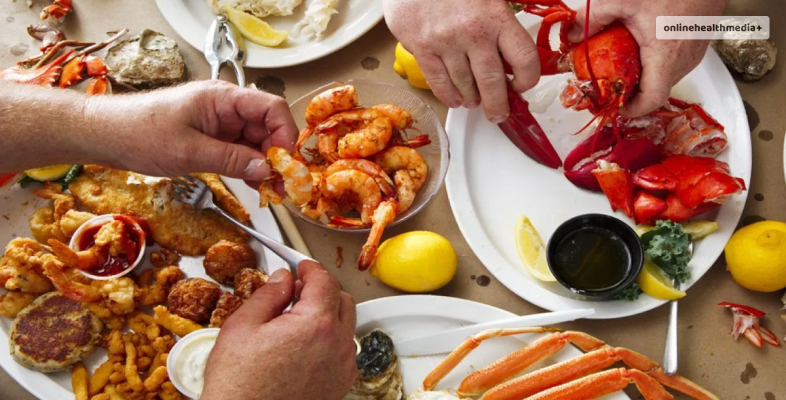
The central feature of the pescatarian diet is the inclusion of fish and other forms of seafood, such as shrimp, crab, lobster, mussels, and clams.
Pescatarians often consume a wide variety of seafood to benefit from diverse nutrients and flavors. Fatty fish like salmon, mackerel, and sardines provide essential omega-3 fatty acids.
3. Lots Of Veggies Too
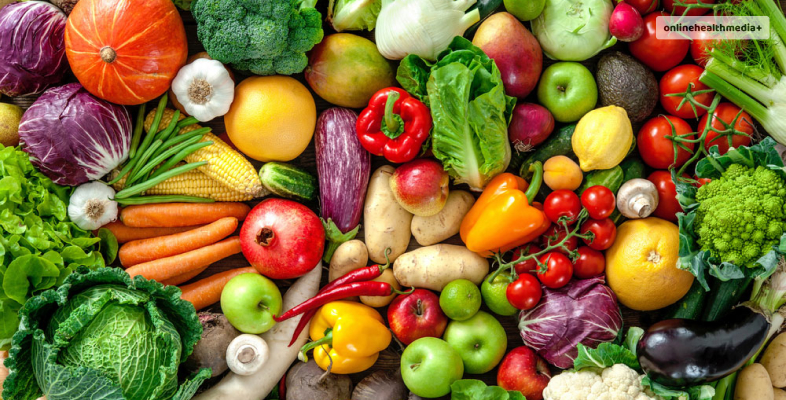
Pescatarians incorporate a wide range of vegan diet ingredients into their diet for vitamins, minerals, fiber, and antioxidants.
Plant-based protein sources like beans, lentils, tofu, tempeh, and whole grains (e.g., quinoa and brown rice) are key components of the diet. Many pescatarians include nuts and seeds in their meals for healthy fats, protein, and added texture.
4. Dairy And Eggs
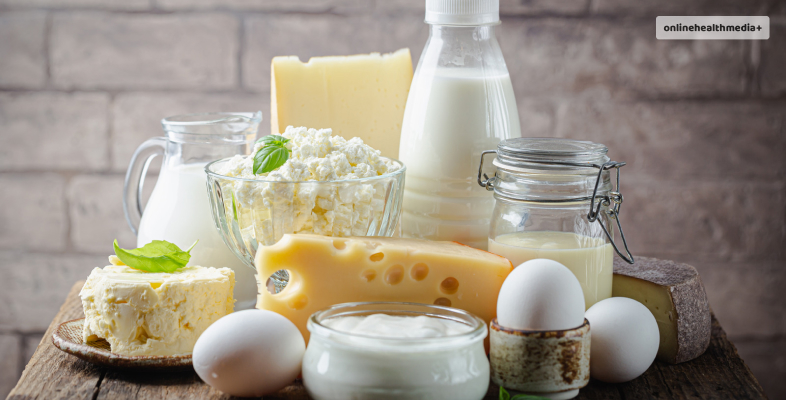
Most pescatarians consume dairy products like milk, yogurt, and cheese. However, some may opt for plant-based alternatives. Eggs are a common part of the pescatarian diet, providing a versatile source of protein and nutrients.
5. Balanced Nutrition
Pescatarians obtain protein from various sources, including seafood, dairy, eggs, legumes, nuts, seeds, and plant-based proteins. This ensures a balanced intake of essential amino acids.
Healthy fats, particularly omega-3 fatty acids from fatty fish, are a hallmark of the pescatarian diet and are known for their heart and brain health benefits.
The diet is rich in vitamins (e.g., vitamins A, C, K, and B vitamins) and minerals (e.g., iron, calcium, and magnesium) from plant-based foods and seafood. High-fiber foods like vegetables, fruits, legumes, and whole grains support digestive health and help control blood sugar levels.
6. Health Benefits
Pescatarians benefit from a higher intake of omega-3 fatty acids, which are known for their anti-inflammatory properties and potential cardiovascular and cognitive benefits.
By avoiding red meat, pescatarians typically consume less saturated fat, which can contribute to heart health. The diet includes a variety of plant-based foods that offer phytonutrients, antioxidants, and fiber, which can reduce the risk of chronic diseases similar to a gluten free diet.
7. Flexibility
Pescatarians have the flexibility to choose from various seafood options, allowing them to cater to personal taste preferences and dietary needs. Some individuals choose the pescatarian diet for ethical, environmental, or health reasons, as it involves reduced consumption of land-based animal meats.
8. Sustainability Considerations
Pescatarians often consider the sustainability of the seafood they consume, selecting responsibly sourced options to support marine ecosystems and fisheries.
What Are The Benefits Of A Pescatarian Diet?

The pescatarian keto diet offers numerous potential health benefits due to its combination of plant-based foods and seafood while excluding red meat and poultry. This balanced dietary pattern has been associated with various advantages.
Here’s a detailed explanation of all pescatarian diet benefits:
1. Heart Health
Fatty fish like salmon, mackerel, and sardines are rich in omega-3 fatty acids, particularly EPA and DHA. These fatty acids have been linked to a reduced risk of heart disease by lowering triglycerides, reducing inflammation, and improving blood vessel function.
The exclusion of red meat and poultry results in a lower intake of saturated fat, which is associated with a decreased risk of heart disease.
2. Improved Brain Health
Omega-3 fatty acids, especially DHA, play a crucial role in brain health and cognitive function. Consuming fish regularly may support memory and cognitive performance, potentially reducing the risk of age-related cognitive decline.
3. Lower Risk Of Chronic Diseases
A diet rich in plant-based foods and seafood has been linked to a lower risk of type 2 diabetes due to its positive effects on insulin sensitivity and blood sugar control.
While not proven as a direct cause, a pescatarian diet’s emphasis on vegetables, fruits, and seafood may contribute to a lower risk of certain cancers compared to diets high in red meat and processed meats.
4. Weight Management
The pescatarian diet can aid in weight management due to its emphasis on lean protein sources, fiber-rich foods, and healthy fats, which help control appetite and promote a feeling of fullness.
5. Rich In Nutrients
Pescatarians have access to a wide range of essential nutrients, including vitamins (e.g., vitamin D, B vitamins), minerals (e.g., iodine, selenium), and antioxidants, thanks to their diverse food choices.
Seafood, dairy, eggs, legumes, nuts, and seeds provide protein from various sources, ensuring adequate protein intake.
6. Omega-3 Fatty Acids For Inflammation
Omega-3 fatty acids possess anti-inflammatory properties that may help reduce chronic inflammation, which is implicated in many chronic diseases.
7. Sustainability Considerations
Choosing seafood from sustainable sources supports responsible fishing practices and reduces the environmental impact of food production.
8. Flexibility And Adherence
The pescatarian diet is flexible and adaptable to individual dietary preferences and restrictions, making it more likely for individuals to maintain long-term adherence.
For those looking to reduce their meat consumption for ethical or environmental reasons, the pescatarian diet provides a suitable alternative.
Are There Any Side Effects Of The Pescatarian Diet?
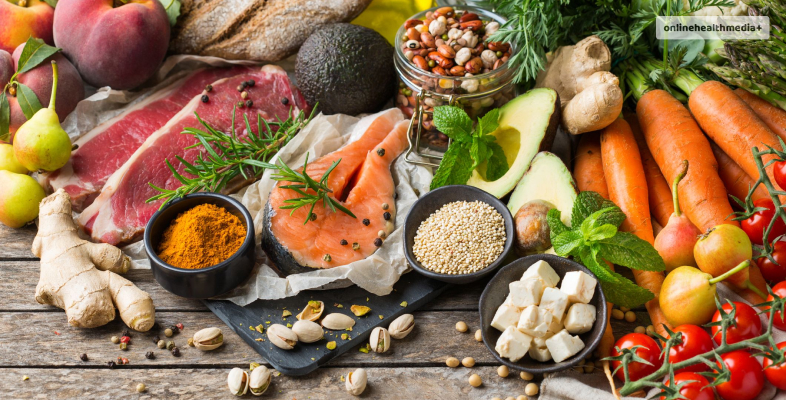
The pescatarian diet is generally considered a healthful and balanced dietary pattern, but like any diet, it can have potential side effects or considerations. It’s essential to be aware of these factors and address them appropriately.
Here’s a detailed explanation of potential side effects or considerations associated with the pescatarian diet:
1. Mercury Exposure
Some types of seafood, particularly large predatory fish like shark, swordfish, king mackerel, and tilefish, can contain high levels of mercury. Excessive mercury intake, especially for pregnant individuals and young children, can lead to health concerns, including neurological issues.
Choose seafood with lower mercury levels, such as shrimp, salmon, trout, and sardines. Pregnant individuals and young children should consult healthcare providers for guidance on safe seafood choices.
2. Environmental Concerns
The pescatarian diet relies on seafood, and overfishing and unsustainable fishing practices can harm marine ecosystems. It’s essential to choose sustainably sourced seafood to support responsible fishing practices.
Therefore, look for seafood products with certification labels like MSC (Marine Stewardship Council) or ASC (Aquaculture Stewardship Council) to ensure they meet sustainability standards. Educate yourself about seafood choices that are environmentally friendly.
3. Allergies And Sensitivities
Seafood Allergies: Some individuals have allergies or sensitivities to seafood, which can lead to allergic reactions ranging from mild hives to severe anaphylaxis.
If you have seafood allergies or sensitivities, a pescatarian diet may not be suitable. Consult with an allergist or healthcare provider for guidance on dietary choices.
4. Nutrient Deficiencies
While seafood provides heme iron (iron from animal sources), which is well-absorbed, some pescatarians may still be at risk of iron deficiency, particularly if they consume minimal seafood or have increased iron needs.
Vitamin B12 is primarily found in animal products, including seafood. Pescatarians should ensure they include adequate sources of B12 in their diet.
Therefore, you must include iron-rich plant foods like legumes, fortified cereals, and dark leafy greens. Consider B12 supplements or fortified foods if you have limited B12 sources in your diet.
5. Food Safety
Seafood Contamination: Seafood can sometimes be contaminated with harmful bacteria or parasites if not handled and cooked properly.
Therefore, ensure proper food handling, storage, and thorough cooking to reduce the risk of foodborne illnesses.
What To Eat In A Pescatarian Diet?
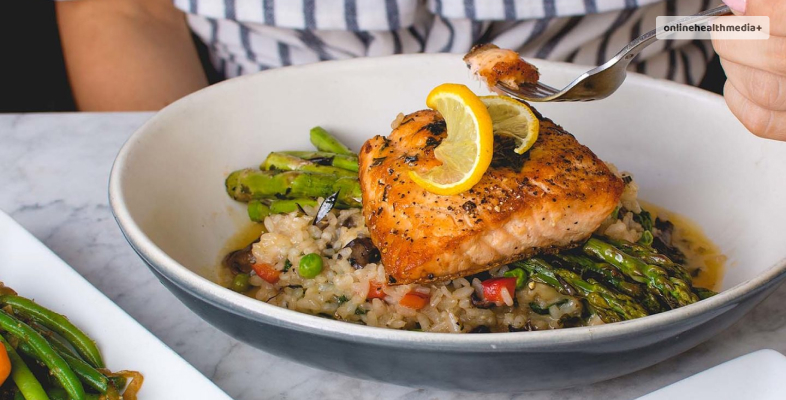
A high protein pescatarian diet emphasizes seafood and plant-based foods while excluding red meat and poultry. Here’s a detailed explanation of what to eat on a low carb pescatarian diet:
1. Seafood
- Fatty Fish: Incorporate fatty fish like salmon, mackerel, sardines, trout, and herring into your diet regularly. These are rich sources of omega-3 fatty acids, which support heart and brain health.
- Lean Fish: Include lean fish options such as cod, tilapia, catfish, and snapper for variety and additional protein.
- Shellfish: Enjoy shellfish like shrimp, crab, lobster, mussels, clams, and oysters, which provide protein, vitamins, and minerals.
2. Vegetables
- Leafy Greens: Incorporate leafy greens like spinach, kale, Swiss chard, and collard greens into your meals for vitamins, minerals, and fiber.
- Colorful Vegetables: Include a variety of colorful vegetables such as bell peppers, tomatoes, cucumbers, carrots, broccoli, and zucchini for a wide range of nutrients.
- Starchy Vegetables: Enjoy starchy vegetables like sweet potatoes, butternut squash, and potatoes for added carbohydrates.
3. Fruits
- Berries: Consume berries like blueberries, strawberries, raspberries, and blackberries for antioxidants and natural sweetness.
- Citrus Fruits: Incorporate citrus fruits such as oranges, grapefruits, lemons, and limes for vitamin C.
- Apples, Pears, and More: Include other fruits like apples, pears, bananas, and kiwi for a variety of flavors and nutrients.
4. Legumes
- Beans: Add beans like black beans, kidney beans, chickpeas, and lentils to salads, soups, and stews for plant-based protein, fiber, and vitamins.
- Tofu and Tempeh: Include tofu and tempeh as meat alternatives in stir-fries, curries, or sandwiches.
5. Whole Grains
- Quinoa: Use quinoa as a versatile grain that provides protein, fiber, and essential amino acids.
- Brown Rice: Opt for brown rice over white rice for added fiber and nutrients.
- Whole Wheat Pasta: Choose whole wheat pasta for a healthier alternative to traditional pasta.
6. Nuts And Seeds
- Almonds, Walnuts, and Pistachios: Snack on nuts or add them to salads for healthy fats and protein.
- Chia Seeds, Flaxseeds, and Hemp Seeds: Sprinkle seeds on yogurt, oatmeal, or smoothie bowls for extra omega-3s and fiber.
7. Dairy And Dairy Alternatives
- Greek Yogurt: Greek yogurt is a good source of protein and probiotics.
- Milk: Choose dairy milk or plant-based alternatives like almond milk, soy milk, or oat milk.
- Cheese: Enjoy cheese in moderation for calcium and flavor.
8. Eggs
Eggs are a versatile source of protein and can be used in various dishes, including omelets, frittatas, and egg salads.
9. Herbs And Spices
- Herbs: Use fresh herbs like basil, parsley, cilantro, and dill to add flavor to dishes.
- Spices: Include spices such as garlic, ginger, turmeric, paprika, and cumin to enhance the taste of your meals without relying on excessive salt.
10. Healthy Fats
- Olive Oil: Use extra virgin olive oil as your primary cooking oil and for salad dressings.
- Avocado: Incorporate avocado into salads, sandwiches, or as a topping for various dishes.
- Coconut: Use coconut milk or coconut oil in recipes for a tropical twist.
11. Beverages
- Water: Stay hydrated by drinking plenty of water throughout the day.
- Herbal Teas: Enjoy herbal teas like chamomile, peppermint, or ginger tea.
- Red Wine (in moderation): Some pescatarians may choose to consume red wine in moderation for its potential health benefits.
Conclusion
Pescatarian diet recipes offer a healthful and flexible approach to eating. It combines the nutritional advantages of a plant-based diet with the addition of seafood, providing a wide range of nutrients while accommodating various dietary preferences and goals.
If you follow a pescatarian diet, then let me know in the comments how beneficial it has been for you!
Also Read
- The Benefits Of Physiotherapy For Chronic Pain Management.
- Anxiety Got You Feeling Restless? Try Meditation For Anxiety!
- Here Is Why Cyclical Ketogenic Diet Is Essential For Athletes.
